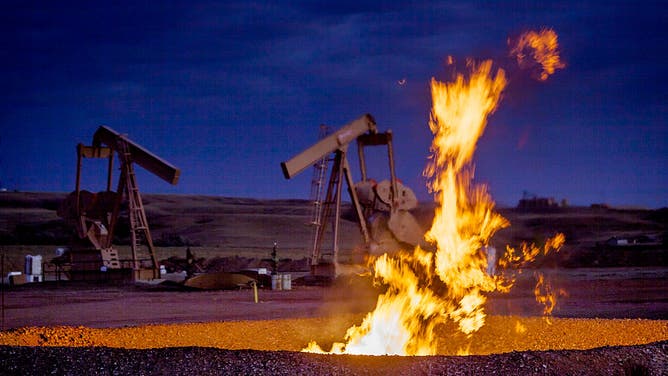US climate plan includes reducing methane emissions worldwide 30% by 2030
EPA says a propsed rule would slash methane emissions by 41 million tons from 2023 to 2035.
Global Methane Pledge announced at UN climate conference to reduce emissions by 2030
During the COP26 conference, President Joe Biden discussed a global plan to reduce methane emissions by 30% by 2030.
President Joe Biden's new climate plan includes cutting U.S. methane emissions by 30% by 2030 and joining the European Union and other nations to reduce major greenhouse gas contributors worldwide.
In conjunction with the Biden Administration's climate plan rollout, the U.S. Environmental Protection Agency announced a proposed rule, under the Clean Air Act, targeting pollution from the existing oil and natural gas industry. Previous rules targeting emissions have focused on new sources.
The EPA made the announcement on the second day of the United Nations Climate Change Conference, or COP26, in Glasgow, Scotland. Since COP26 began Monday, Biden revealed America's new long-term plan to cut emissions in half and restore nearly 500 million acres of natural forest in the U.S., both by 2030.
In September, the U.S. and EU announced the Global Methane Pledge, expecting more countries to sign on during COP26. More than 100 other countries have joined the pledge to reduce emissions by at least 30%.
Methane is a greenhouse gas that contributes to global warming, and, according to the EPA, one-third of greenhouse gases are from human-related methane emissions. Livestock production is also a source of methane emissions. According to the University of California, Davis, a single cow will belch about 220 pounds of methane in a year. However, according to UC Davis, beef cattle only account for about 4 percent of U.S. greenhouse gas emissions.
The U.S. is a significant contributor to methane emissions, emitting more methane than all 164 countries combined, according to the EPA.
The Associated Press reports the current U.S. methane regulations only apply to oil and natural gas sources built or modified after 2015, which makes up less than 10% of well sites.
EPA Administrator Michael S. Regan said updating the rules for new and existing sources of oil and natural gas will "ensure robust and lasing cuts in pollution across the country."

Flames from a flaring pit near a well in the Bakken Oil Field. The primary component of natural gas is methane, which is odorless when it comes directly out of the gas well. In addition to methane, natural gas typically contains other hydrocarbons such as ethane, propane, butane, and pentanes. Raw natural gas may also contain water vapor, hydrogen sulfide (H2S), carbon dioxide, helium, nitrogen, and other compounds. (Source: www.earthworksaction.org). As of July 2014, roughly 30 percent of the (Photo by Orjan F. Ellingvag/Corbis via Getty Images)
(Getty Images)
Under the proposed rule, the U.S. would slash its methane emissions by 41 million tons from 2023 to 2035.
The plan would be implemented through a monitoring program, using technology to find leaks faster and require states to engage with "overburdened and underserved communities" on emission-reduction projects.
Before the EPA announcement, companies and states have taken action independently, revealing plans to reduce methane emissions.
The EPA proposal will also create new standards for new and existing pneumatic controllers. The devices are widely used in the oil and natural gas industry to control liquid level, temperature, and pressure and release methane into the air, according to the Clean Air Task Force, an atmospheric pollution research group.
In February, regulators in Colorado voted to require zero-emission pneumatic controllers for new and existing oil and gas sites.
ExxonMobil Senior Vice President Neil Chapman said last month that the company supports the Global Methane Pledge. The company previously announced it will reduce its methane emissions by 40-50% by 2025 compared to 2016 levels and develop new methane detection and mitigation technologies.
As far as the plan's impact on natural gas and oil prices, the EPA estimates the changes would be "pennies per barrel of oil or thousands of cubic feet of gas."
"By building on existing technologies and encouraging innovative new solutions, we are committed to a durable final rule that is anchored in science and the law, that protects communities living near oil and natural gas facilities, and that advances our nation's climate goals under the Paris Agreement," Regan said.
Members of the public will be able to weigh in on the proposed rule, and it will hold a virtual public hearing.
